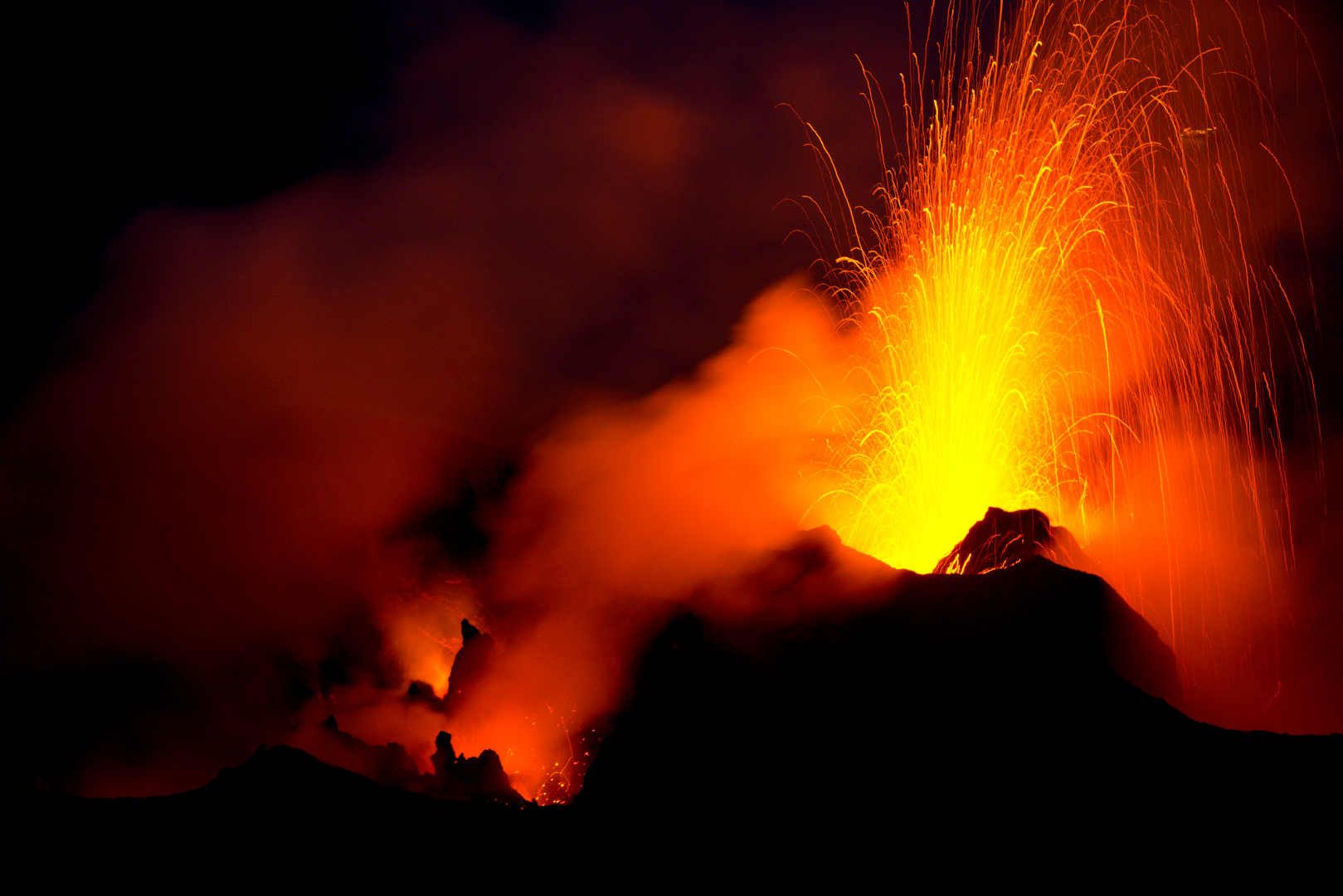Certain volcanoes on Earth belong in a class all on their own; they are capable of shifting temperatures on a global scale with their “supereruptions,” and are capable of changing the landscape around them for millennia after their explosive outburst. These volcanoes, known as supervolcanoes, are among the most fearsome on Earth—and they may remain dangerous for thousands of years after they go up in smoke.
It appears that our planet is not alone in this issue, however. Deemed Earth’s twin, Mars may have had its own host of supereruptions as well—but it appears that they’ve erupted long before we even got any chance of seeing them, according to new research published in the journal Geophysical Research Letters.
In the new study, Dr. Patrick Whelley, from NASA’s Goddard Space Flight Center, and a team of researchers used data obtained from NASA’s Mars Reconnaissance Orbiter (MRO), a satellite deployed by NASA back in 2005 and inserted into Mars’ orbit around 2006 in order to obtain data about the planet’s surface, including geology and climate.
Whelley and team focused on an area of Mars known as Arabia Terra, and used the MRO’s Compact Reconnaissance Imaging Spectrometer for Mars to identify and characterize the minerals located within the plain. The team believes that some of the craters found within Arabia Terra are what they call “explosive calderas,” or remnants of volcanoes capable of producing supereruptions. Analogues to these surface features on Earth include the Yellowstone Caldera inside Yellowstone National Park in the United States, and Lake Toba in Indonesia.
As such, the team were in pursuit of remnants or otherwise evidence of volcanic ash, which would have been produced by these calderas at the time of eruption. If the craters they see within Arabia Terra were in fact calderas, there must have been enough elapsed time after the eruption such that what remained of the volcanoes that erupted were eroded to such an extent, similar to the craters that they see now. In short, these eruptions must have happened a long, long time ago—on timescales of billions of years.
Using models of the Martian surface to predict where any ash from these used-to-be volcanoes would have gone after being carried by Martian wind, the team used MRO’s imaging technology to focus on those areas. There, they found ancient volcanic minerals that had been turned into clay by ancient bodies of water that used to litter the planet’s surface, including minerals like montmorillonite and imogolite. By constructing a 3D topographic map of the area and layering their new data atop it, they realized that the deposits they detected were very close to where they had predicted the ashfall from an ancient volcano in that area would have gone to—meaning they were on to something.
They then used data obtained from previous studies to determine just how many eruptions were needed to produce the amounts of ash needed to produce the thickness of the ash layer they measured. The research team found that “thousands of [supereruptions]” would have gone off to produce the ash they measured. The question, then, is how so many explosive volcanoes were concentrated in one spot on Mars. For instance, supervolcanoes on Earth are scattered between continents, like the distance between Yellowstone National Park and Lake Toba. Any volcanoes near these Earth supervolcanoes, if any, were mostly regular ones.
“People are going to read our paper and go, ‘How? How could Mars do that? How can such a tiny planet melt enough rock to power thousands of super eruptions in one location?’ I hope these questions bring about a lot of other research,” said Dr. Jacob Richardson, who’s also from the Goddard Space Flight Center.
Whelley, Richardson, and the team believe that there could have been clustered explosive volcanoes here on Earth during its early history, too—it’s just that ours have eroded physically and chemically in the eons since they formed, or may have moved around the globe as continents shifted due to plate tectonics. The team also believes that other volcanic planets and moons in the Solar System may have these explosive volcano clusters, like in Venus or in Jupiter’s moon Io.
As it happens, Mars is also the home of a shield volcano known as Olympus Mons, which has 1,000 times the volume of Hawaii’s Mauna Loa, the largest volcano on Earth. With its peak towering at a height of 21.9 km (13.6 mi), Olympus Mons is also the tallest mountain in the Solar System, beating Earth’s Mt. Everest by as much as 18 km (11.2 mi).
(For more Mars news, check out our pieces on NASA’s Perseverance rover and its companion drone, Ingenuity. NASA also used Perseverance recently to obtain rock samples—read on with our written piece on the topic.)
References
- NASA. (n.d.). Mars reconnaissance orbiter. NASA. Retrieved September 17, 2021, from https://mars.nasa.gov/mro/
- Sci-News. (2021, September 16). Early Mars Experienced Volcanic Supereruptions, Reseachers Say. Sci-News. http://www.sci-news.com/space/early-mars-volcanic-supereruptions-10075.html
- Shekhtman, L. (2021, September 15). Nasa confirms thousands of massive, ancient volcanic eruptions on mars. NASA’s Mars Exploration Program. https://mars.nasa.gov/news/9039/nasa-confirms-thousands-of-massive-ancient-volcanic-eruptions-on-mars
- Whelley, P., Novak, A. M., Richardson, J., Bleacher, J., Mach, K., & Smith, R. N. (2021). Stratigraphic evidence for early martian explosive volcanism in arabia terra. Geophysical Research Letters, 48(15), e2021GL094109. https://doi.org/10.1029/2021GL094109











